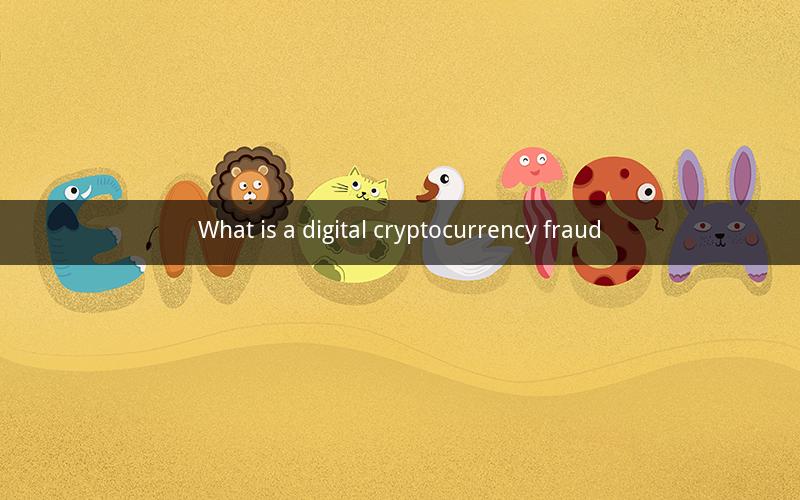
Understanding Digital Cryptocurrency Fraud
Table of Contents
1. Introduction to Digital Cryptocurrency
2. What is Cryptocurrency Fraud?
3. Types of Cryptocurrency Fraud
- Phishing Scams
- Ponzi Schemes
- Fake Exchanges
- Pump and Dump
- Investment Scams
4. The Impact of Cryptocurrency Fraud
5. Prevention and Protection Measures
6. Conclusion
1. Introduction to Digital Cryptocurrency
Digital cryptocurrencies, often referred to as crypto, are digital or virtual currencies that use cryptography for security. They are decentralized, meaning they are not controlled by any central authority, and they operate on a technology called blockchain. Bitcoin, the first and most well-known cryptocurrency, was created in 2009, and since then, thousands of other cryptocurrencies have emerged.
2. What is Cryptocurrency Fraud?
Cryptocurrency fraud involves deceitful activities aimed at obtaining valuable digital currencies by taking advantage of unsuspecting individuals. These activities exploit the anonymity and decentralized nature of cryptocurrencies, making them an attractive target for fraudulent schemes.
3. Types of Cryptocurrency Fraud
3.1 Phishing Scams
Phishing scams are one of the most common forms of cryptocurrency fraud. They involve sending fraudulent emails or messages that appear to come from reputable sources, such as exchanges or wallets, to trick individuals into providing their private keys or personal information.
3.2 Ponzi Schemes
Ponzi schemes are fraudulent investment operations that promise high returns to investors using funds from new investors. These schemes are unsustainable and eventually collapse, leaving investors with significant losses.
3.3 Fake Exchanges
Fake exchanges mimic legitimate cryptocurrency trading platforms to deceive users into depositing their funds. Once the funds are transferred, the fraudulent exchange vanishes, leaving investors with no access to their money.
3.4 Pump and Dump
Pump and dump schemes involve artificially inflating the price of a cryptocurrency, often through false news or rumors, and then selling off the coins at a higher price. This creates a bubble that bursts, leaving investors with significant losses.
3.5 Investment Scams
Investment scams involve fraudulent offers to invest in promising projects or companies. These scams often promise high returns with little to no risk, but in reality, the projects are non-existent or the returns are not as advertised.
4. The Impact of Cryptocurrency Fraud
The impact of cryptocurrency fraud is significant. It not only leads to financial losses for individuals but also undermines the credibility and stability of the cryptocurrency market. The loss of trust can deter potential investors and hinder the growth of the industry.
5. Prevention and Protection Measures
To protect against cryptocurrency fraud, individuals and organizations can take several measures:
- Educate Yourself: Stay informed about the latest cryptocurrency scams and how to identify them.
- Use Secure Platforms: Only use reputable exchanges and wallets that have robust security measures.
- Backup Your Keys: Keep backups of your private keys in a secure location.
- Be Skeptical of High Returns: Be wary of investment opportunities that promise unrealistic returns.
- Use Two-Factor Authentication: Enable two-factor authentication on all accounts to add an extra layer of security.
- Report Suspicious Activity: If you suspect fraudulent activity, report it to the relevant authorities.
6. Conclusion
Cryptocurrency fraud is a significant threat to the integrity of the digital currency market. By understanding the types of fraud and implementing preventive measures, individuals can protect themselves from falling victim to these schemes. As the cryptocurrency industry continues to grow, it is crucial to remain vigilant and informed about the risks involved.
Questions and Answers
1. What is the main difference between a phishing scam and a Ponzi scheme in the context of cryptocurrency fraud?
- A phishing scam involves tricking individuals into providing their private keys or personal information, while a Ponzi scheme is a fraudulent investment operation that promises high returns using funds from new investors.
2. How can you identify a fake cryptocurrency exchange?
- Look for signs of a fake exchange, such as a lack of proper licensing, poor website design, and a lack of customer support.
3. What is the purpose of two-factor authentication in cryptocurrency security?
- Two-factor authentication adds an extra layer of security by requiring users to provide two forms of identification, such as a password and a unique code sent to their phone.
4. How can you protect your cryptocurrency from being stolen through phishing?
- Be cautious of unsolicited emails or messages, never share your private keys, and verify the legitimacy of any communication before providing any sensitive information.
5. What should you do if you suspect you have been a victim of cryptocurrency fraud?
- Report the incident to the relevant authorities and change your passwords immediately. Consider seeking legal advice if necessary.
6. How can you tell if a cryptocurrency investment opportunity is a scam?
- Be wary of promises of high returns with little to no risk, lack of transparency, and pressure to invest quickly.
7. What is the role of the blockchain in preventing cryptocurrency fraud?
- The blockchain's decentralized and immutable nature makes it difficult for fraudulent transactions to go unnoticed, as they would require a majority of the network's nodes to agree on the change.
8. How can you stay updated on the latest cryptocurrency scams?
- Follow reputable news sources, join cryptocurrency forums, and stay informed about the latest trends and developments in the industry.
9. What are some common red flags of a pump and dump scheme?
- Rapid price increases without a legitimate reason, a lack of information about the coin, and a strong push from social media or online communities.
10. How can you educate others about cryptocurrency fraud?
- Share your knowledge and experiences, create informative content, and encourage others to be cautious and informed about the risks involved in the cryptocurrency market.